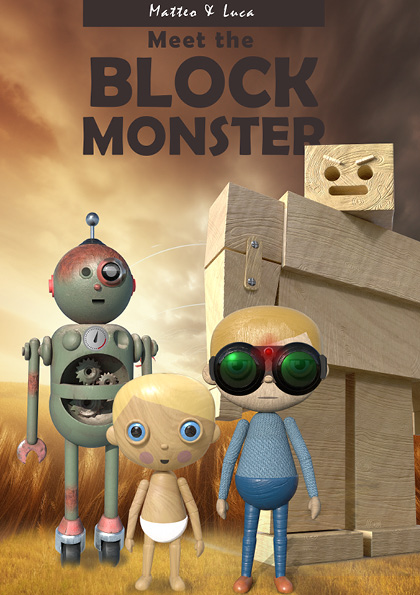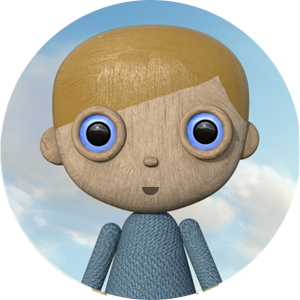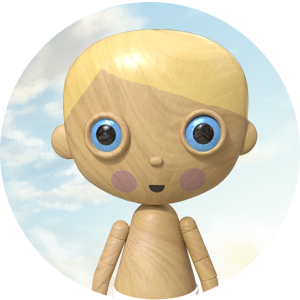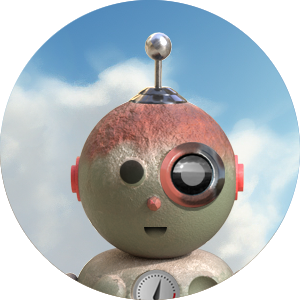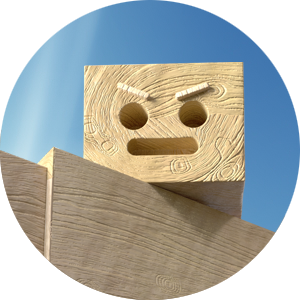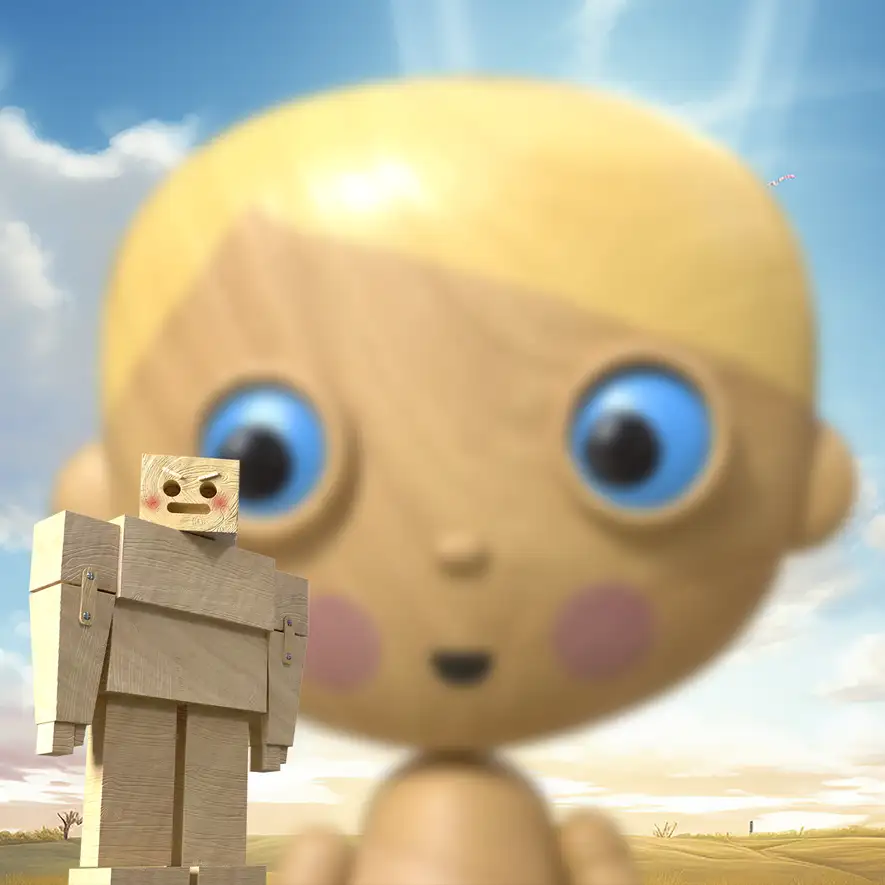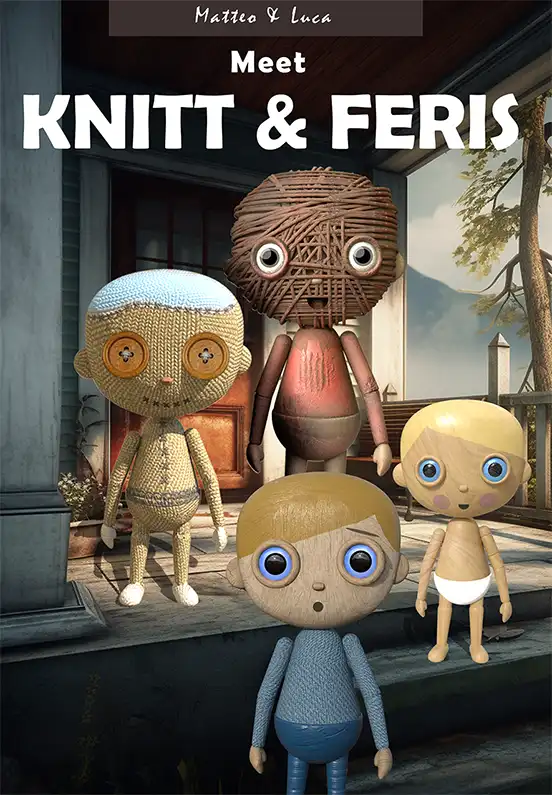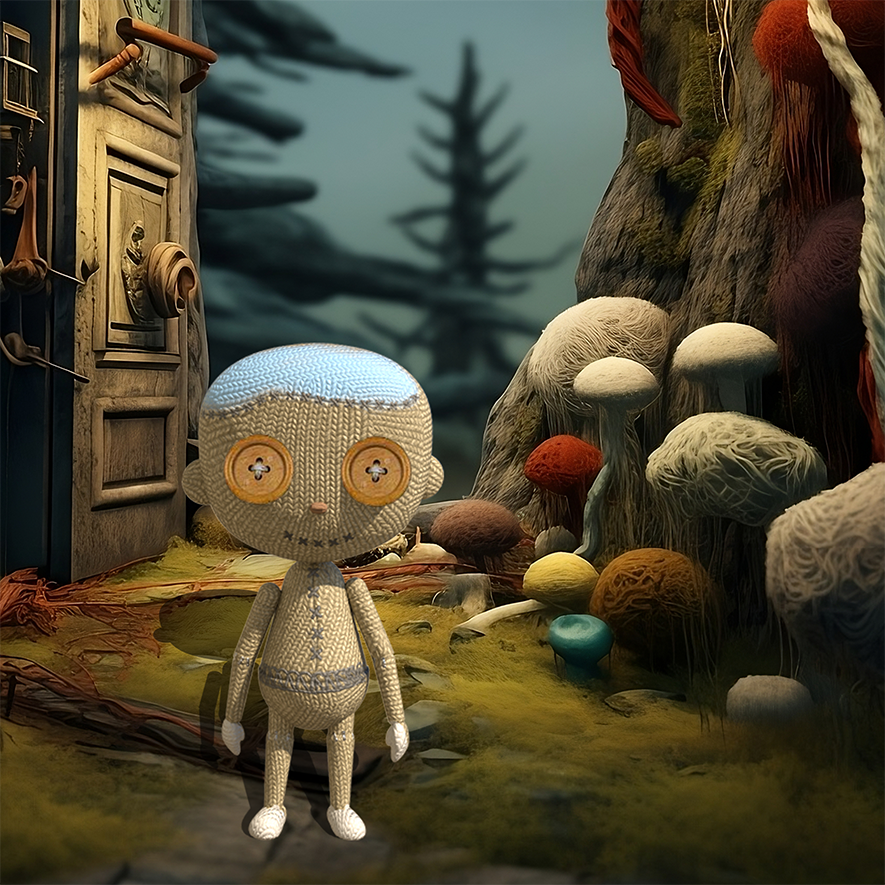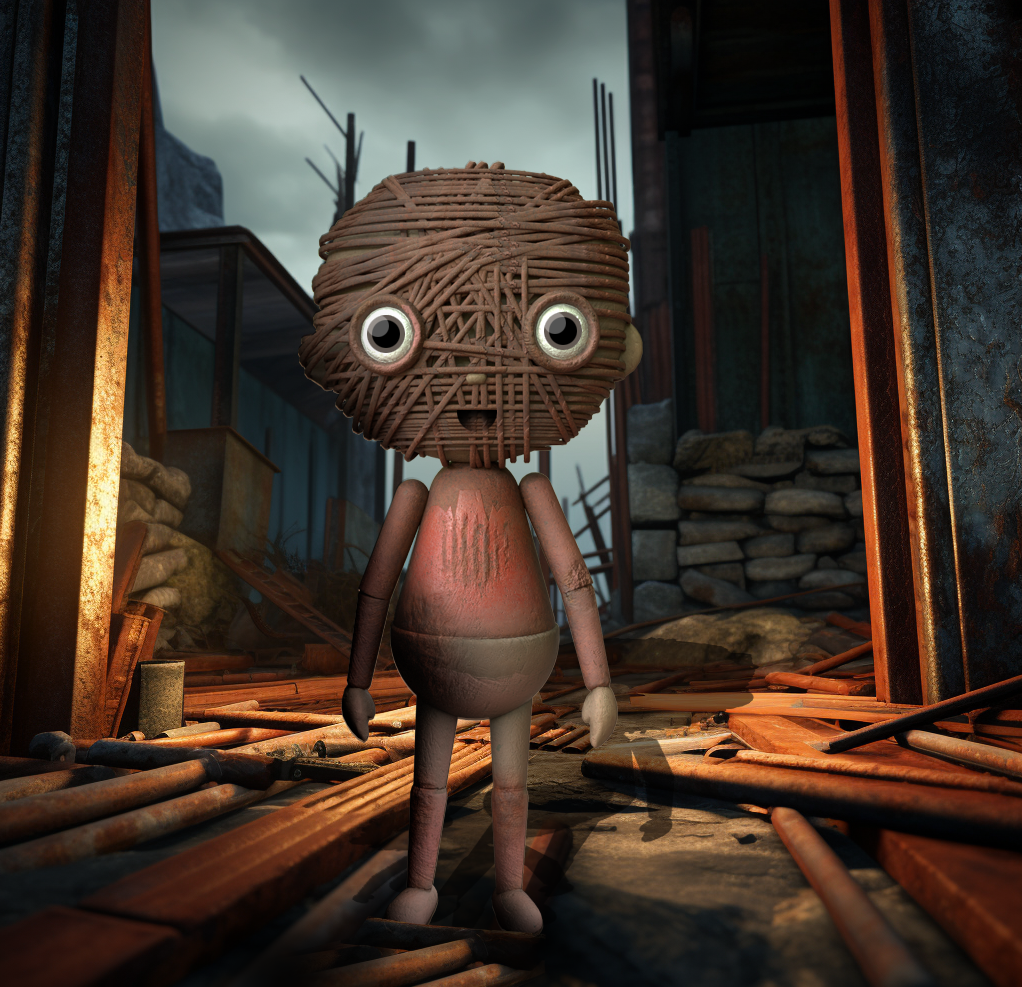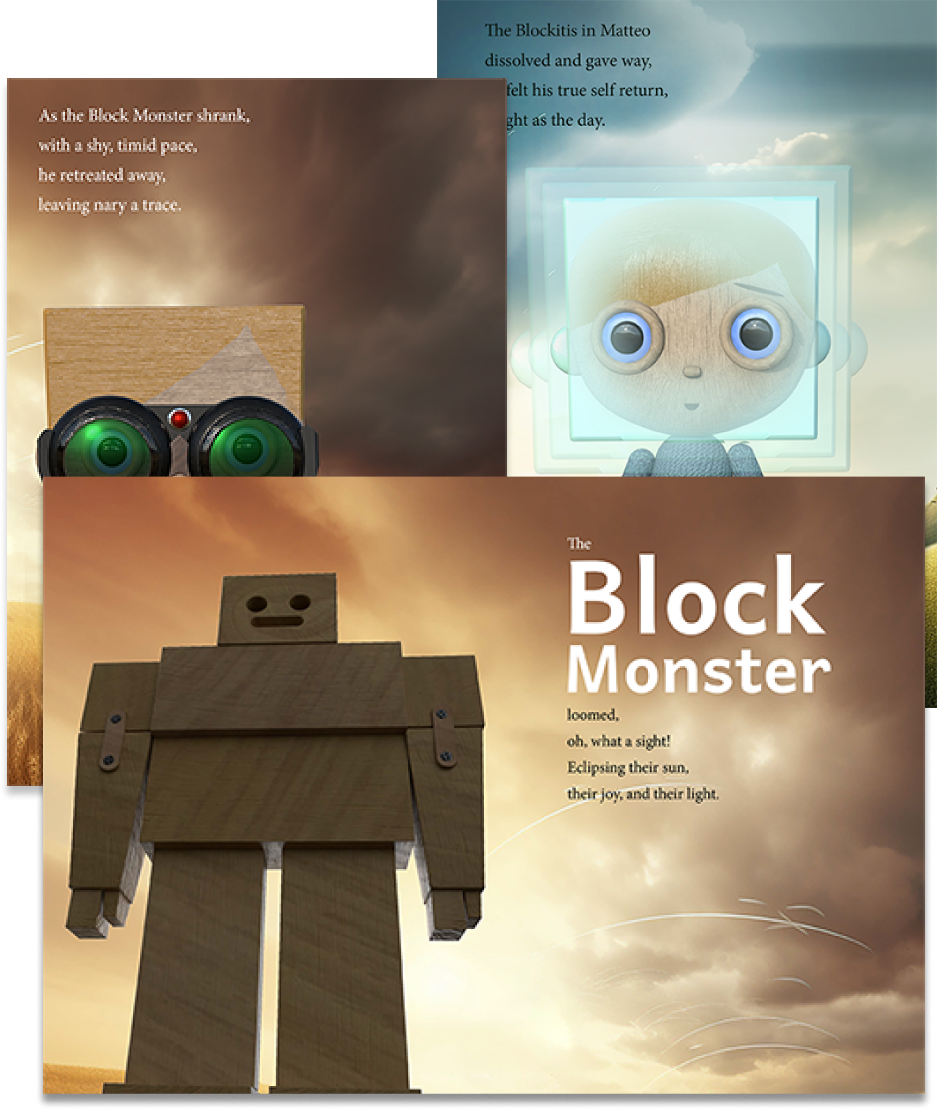Bathed in warm sunlight, Matteo and Luca frolic carefree, their laughter echoing the joy of living fully in the present. The radiant light surrounding them symbolizes the wellspring of pure happiness that fuels their playful spirits.
Suddenly, the sun’s warmth wanes, and the light fades. An unseen presence, the Block Monster, has obscured the light and disrupted Matteo’s connection to the present. Unaware of the intruder, he struggles to make sense of the sudden shift in his emotions.
Meanwhile, Luca remains blissfully unaffected, demonstrating that the source of Matteo’s turmoil lies solely within himself.
As Matteo tries in vain to regain his happiness, the Block Monster thrives on his efforts, growing stronger and more persistent. This highlights the futility of attempting to suppress or ignore one’s emotions in the face of adversity.
Bumblebolt Rattleclank, Matteo’s robotic companion, noticed his distress and, utilizing his unique ability to perceive the unseen, crafted Block Vision Glasses. These extraordinary lenses, symbolic of awareness, grant him sight in the darkness, much like night-vision goggles. Equipped with newfound clarity, Matteo finally perceives the source of his emotional upheaval.
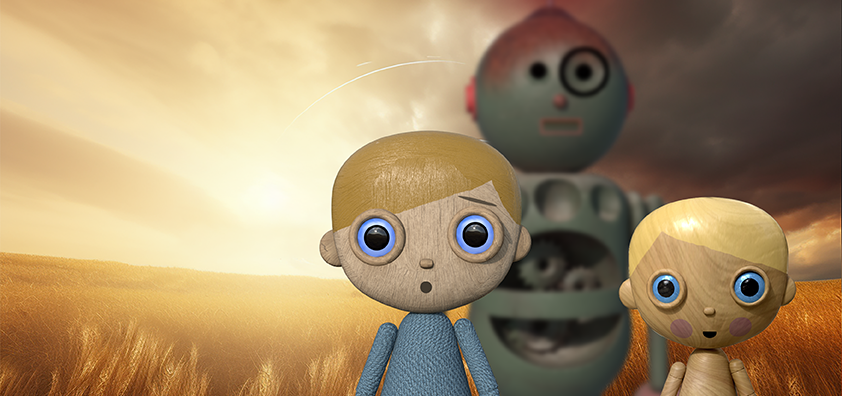
Realizing that there is no need to battle the Block Monster, Matteo watches as it gradually diminishes in size, simply by bringing it into his conscious awareness. As the creature’s influence wanes, Matteo emerges from the grips of his Blockitis, returning to his natural, carefree state.
As we cultivate greater consciousness about our emotions and their underlying causes, we can begin to detach from these patterns, making more deliberate choices in our thoughts and actions. This process liberates the mind from the limiting beliefs and negative cycles perpetuated by the Pain Body.
While children may not yet have developed all the emotional triggers present in adults, teaching them to view their emotions as separate from themselves fosters a deeper awareness and comprehension of their feelings without becoming overwhelmed. This understanding can help them effectively manage their emotions and prevent entrapment within the Pain Body as they mature.
